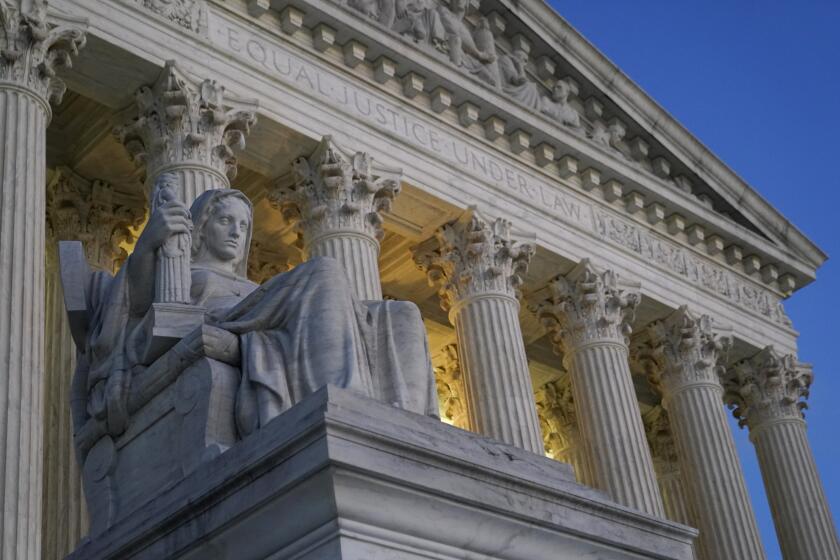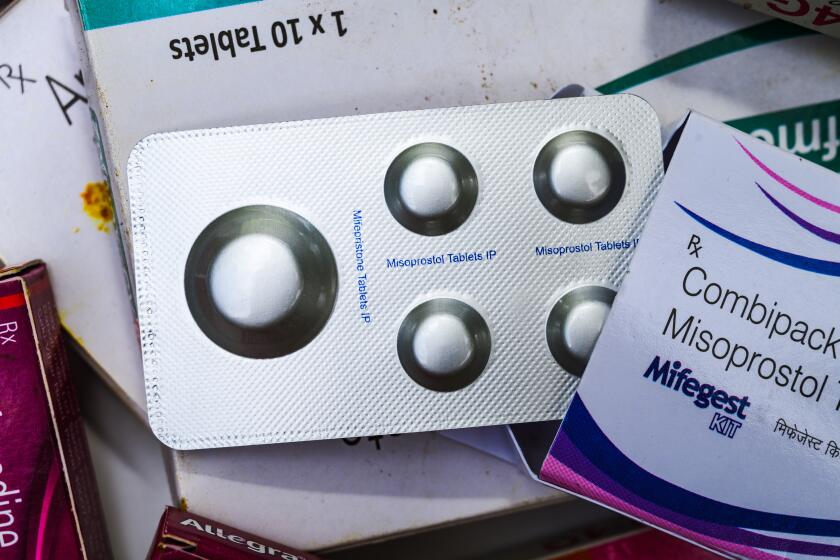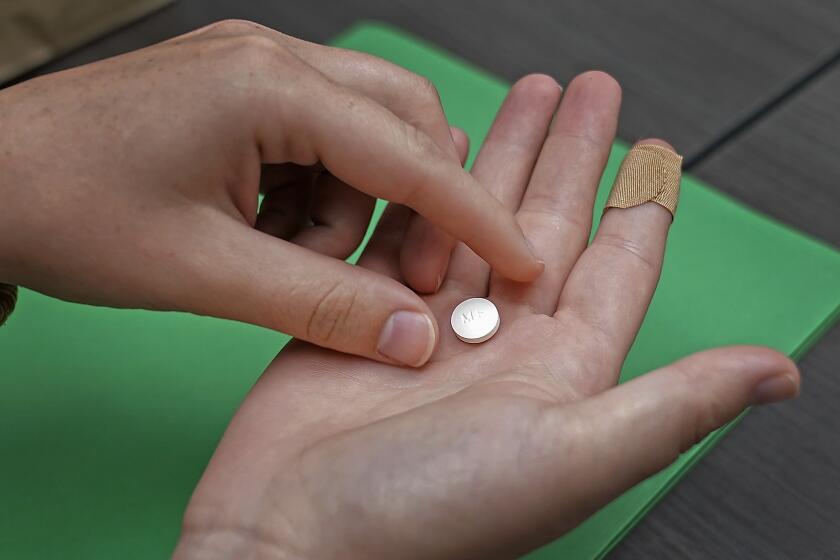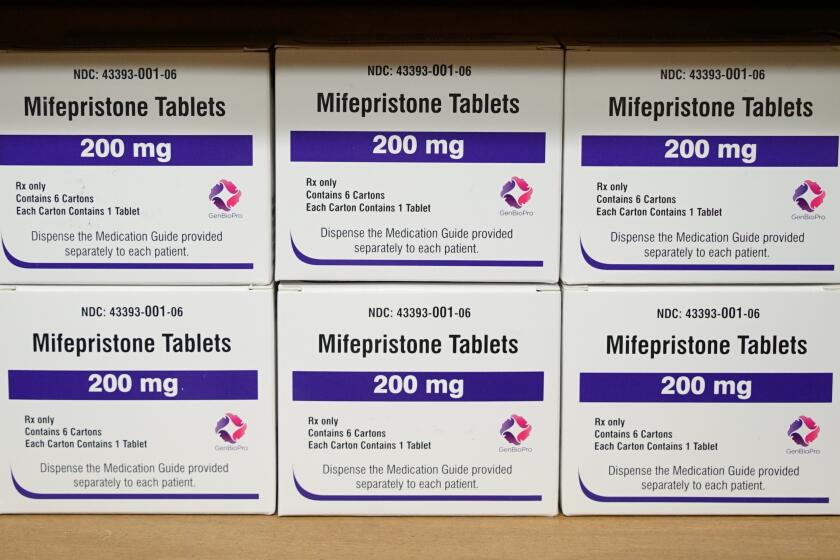Opinion: The mifepristone case should be an easy one for the Supreme Court. But will it be?
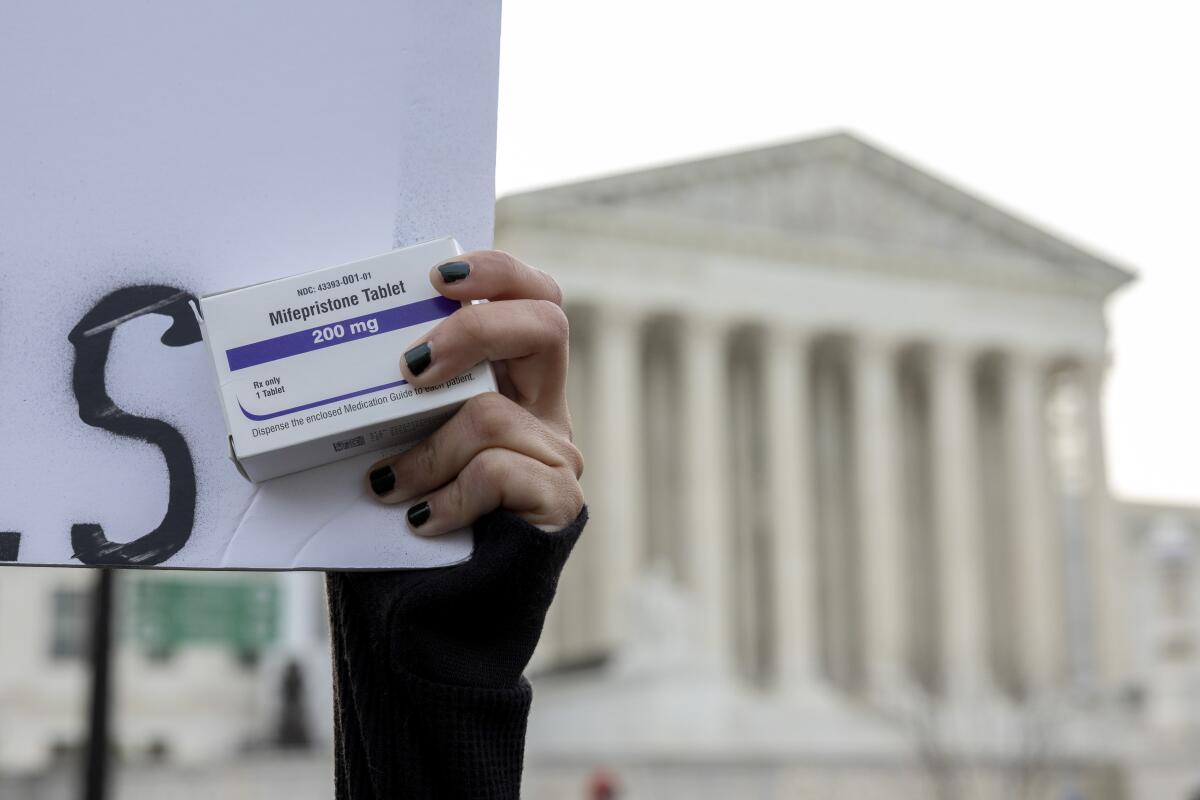
- Share via
As a matter of law, the case argued Tuesday at the Supreme Court concerning the availability of medicine to induce abortions is easy: The Food and Drug Administration has the authority to make mifepristone available and to later increase its availability. But as the oral arguments in Food and Drug Administration vs. Alliance for Hippocratic Medicine indicated, the outcome is anything but clear.
In 2000, the FDA approved mifepristone as part of a two-drug protocol to induce abortions. Last year, about 63% of all U.S. abortions were medically induced using these drugs rather than being surgically performed.
Medically induced abortions have increased since Roe vs. Wade was overruled in 2022. Especially in states that have prohibited virtually all abortions, the ability of a woman to have an abortion by taking pills, which can be obtained in a number of ways, has taken on enormous importance. Even in states such as California where abortion is legal, “medication abortions” provide a preferable, safe alternative to surgical procedures for many seeking abortions.
The justices may turn back the clock on medication abortion, the procedure most women in both red and blue states use to terminate pregnancy.
A conservative antiabortion group brought a challenge to the FDA’s approval of mifepristone. An openly antiabortion federal judge in Texas issued an order stopping the distribution of mifepristone everywhere in the country. As U.S. Solicitor Gen. Elizabeth B. Prelogar pointed out during oral arguments on Tuesday, this was the first time in history that a judge had overturned the FDA’s approval of a drug.
A conservative panel of the U.S. 5th Circuit Court of Appeals said that the judge was wrong in stopping all use of mifepristone after it had been on the market for 23 years, but the appellate court overturned FDA actions that over the years had made the drug more easily available. In 2016, the FDA said that the drug could be used until the 10th week of pregnancy rather than just to the seventh week as initially permitted, reduced the number of required in-person clinical visits from three to one and allowed nonphysician healthcare providers, such as nurse practitioners, to prescribe and dispense mifepristone. It also reduced the dosage from 600 milligrams to 200 milligrams. In 2021, the FDA eliminated the requirement that mifepristone be administered in person; it was the only drug for which there was such a requirement.
Supreme Court justices question whether a group of Texas doctors had legal standing to sue over access to abortion pills through pharmacies or through the mail.
The 5th Circuit overturned these 2016 and 2021 changes, concluding that they were “arbitrary, capricious, and an abuse of discretion” on the part of the FDA. That decision, if upheld, would make it much harder for those seeking abortions to have access to mifepristone, and it is that ruling that is being reviewed by the Supreme Court.
There are multiple reasons the Supreme Court should find in favor of the FDA and mifepristone. To begin with, no one has standing to bring this lawsuit. In order to sue in federal court, a plaintiff must have personally suffered an injury. But no one is hurt by the FDA’s making mifepristone more easily available.
The primary argument made by Erin M. Hawley, who was representing the plaintiffs, was that doctors who don’t want to perform abortions will be required to do so in an emergency when there are complications from the use of mifepristone. But as the solicitor general repeatedly pointed out, under federal law, no doctor is required to perform abortions or prescribe medication that offends their beliefs. Justice Elena Kagan stressed that there was no indication of any doctor with a conscience objection to abortions ever having been forced to perform one because of the FDA rules regarding mifepristone.
Mifepristone has been used more than 5 million times in the U.S. since its FDA approval in 2000. The Supreme Court will weigh a challenge to expanding its access.
Even if the court stretches the law and finds that the plaintiffs have standing, the case still should be easy to decide in the FDA’s favor on its merits. Under the federal Administrative Procedures Act, an agency action should be overturned only if it is “arbitrary, capricious, or an abuse of discretion.” This is a legal standard that is very deferential to the agency. In fact, in 2021, Chief Justice John G. Roberts Jr. said, “Courts owe significant deference to the politically accountable entities with the ‘background, competence, and expertise to assess public health.’ ” In light of overwhelming evidence as to the safety of mifepristone, it is impossible to say that the FDA’s actions were arbitrary and capricious, no matter the opinion of the 5th Circuit.
One of the most frightening aspects of Tuesday’s oral arguments was that both Justices Clarence Thomas and Samuel A. Alito Jr. invoked a statute adopted in 1873, the Comstock Act, which prohibits shipment of obscene materials and contraceptives through the mails or by common carriers. It also forbids shipment of “every article, instrument, substance, drug, medicine, or thing which is advertised or described in a manner calculated to lead another to use or apply it for producing abortion.” The Comstock Act has not been used for over a century, but if the court is willing to apply it now, it is a huge threat to abortions, even in states where it is legal.
As the Supreme Court weighs limiting access to mifepristone, here are some of the numbers on abortion pill usage in the U.S. and California.
With six justices on the court who both oppose abortion and want to limit the power of federal agencies, it is hard to predict the outcome of the mifepristone case, despite the clarity of the issues. If the court overturns the FDA here, it will open the door to challenges against countless other drugs.
Ultimately, as Justice Ketanji Brown Jackson indicated near the end of the oral arguments, the question is who should decide if a drug is safe and effective, the FDA or the federal courts? Since 1906, the answer, without exception, has been the FDA and that should remain the law.
Erwin Chemerinsky is a contributing writer to Opinion and the dean of the UC Berkeley School of Law. His latest book is “Worse Than Nothing : The Dangerous Fallacy of Originalism.”
More to Read
A cure for the common opinion
Get thought-provoking perspectives with our weekly newsletter.
You may occasionally receive promotional content from the Los Angeles Times.
